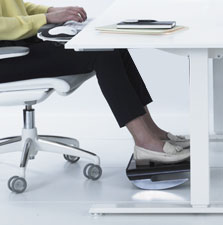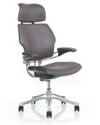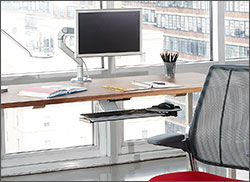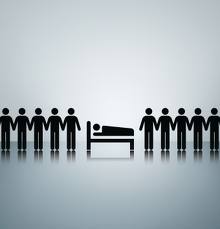In the era of globalization and industrialization, service sector is the one which is growing rapidly in any country. In Industrial Society, role of office is very important as employee spend 70% of their time in office and they sit more than they sleep in their whole life. In a good work place, every piece of furniture is going to play an important part in boosting productivity and potential of an employee. Sure, workers can survive in an uncomfortable chair or in a workstation with limited privacy, but it might not be the best way for them to truly thrive.
According to a survey done by “Furniture At Work”, it has been found that 99.6% people accepted uncomfortable chair effect their productivity and therefore it is very important that furniture in office should be designed keeping ergonomics in mind.

Ergonomic is nothing but designing equipment and devices that fit the human body, its movements, and its cognitive abilities to mitigate health risks such as lower back pain, headaches, tension, fatigue and much more. Ergonomic chairs and desks moves with you from sitting to standing and keyboard trays that tilt and swivel which makes you comfortable.

Ergonomic Office Furniture are so simple to use that the functionality often invisible to the user.
- Lumbar support for lower back
- Knee angle- 90 degree
- Angle between thigh and back- 90 degree
- Adjustable seat height
- Footrests to maximize the comfort
- Elbow angled at 90 degree and wrists should be straight while working on the computer
- Viewing distance from the computer should be of 19”-24” and viewing angle should be of 35 degree
People are facing various issues like repetitive strain injury and musculature disorders in office due to uncomfortable chairs and desks.
We must appreciate and show some gratitude to Humanscale products which designed ergonomic positioned chairs to LED Light to create more comfortable place to work. For eg.

1) Humanscale designs all of its chairs with the arms attached to the back, so when the sitter moves, the arms are in a healthy, ergonomic position every time. It can weigh as much as 15 pounds and be made of up to 40 parts, use the laws of physics and the sitter’s own body weight. As a result, the chair automatically reads the weight of the user, allowing for the mechanism to provide perfect recline with the correct tension for every individual.
2) Humanscale has designed innovative sit/stand solutions that encourage users to move more.
3) Keyboard systems designed to be stylish and lightweight while still offering the user exceptional functionality and ease of use
4) Monitor arms are exceptionally durable and simple to use, with innovative mechanical springs replacing the traditional failure-prone gas cylinders
5) Task lights help to reduce eye strain, improve computer-based reading comfort and reduce energy use and costs due to advanced LED technology.
6) CPU holders provide a safe and secure storage solution for every company’s technology investment.
7) Footrests and Foot machines help to reduce swelling and discomfort in the lower legs during prolonged periods of sitting.
8) Laptop holders position monitors at an ergonomic height and require the use of an external keyboard for long-term user comfort.








